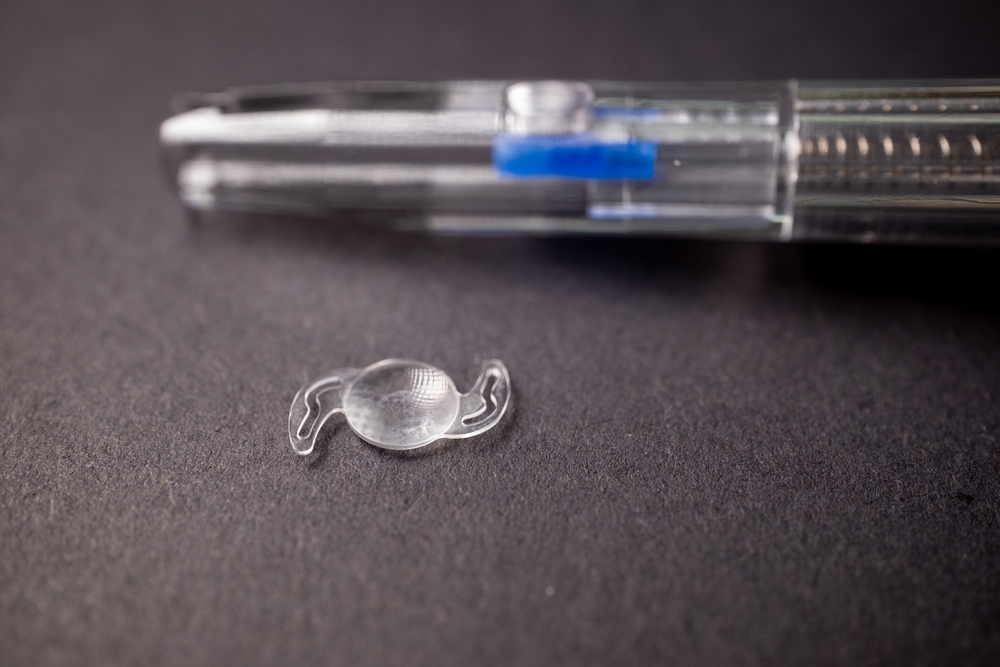
If you are someone who has always struggled with their vision, and you're interested in learning more about LASIK procedures, you may be introduced to RLE, or Refractive Lens Exchange.
Whether you're searching for ophthalmologists near me or you are seeking ways to prevent cataracts from developing as you age, learning about RLE can help you determine if the procedure is right for you.
What is RLE?
RLE, or refractive lens exchange surgery, is a procedure that is typically completed to replace a patient's original lenses of the eye with an artificial lens. With RLE, an IOL, or an intraocular lens, is placed in the same position as the individual's original lens, which is removed through a process called phacoemulsification.
Once the surgery is complete, the patient may no longer need to wear contacts or glasses regularly. In many instances, RLE will also prevent the development of cataracts from occurring, as synthetic lenses are incapable of generating cataracts of the eye.
Is RLE Similar to LASIK?
Yes and no. While RLE helps significantly improve the vision of a patient, it utilizes synthetic lenses to do so during the procedure. With a typical LASIK procedure, the patient's own cornea is reshaped, and a flap is created by the surgeon to improve vision without the addition of a new artificial lens in place.
So while both types of eye surgeries are useful for restoring and improving vision, they require different techniques to achieve the desired results.
Who is RLE Suitable For?
Choosing RLE over LASIK can be confusing, especially if you are unfamiliar with both procedures or if you have only recently been diagnosed with cataracts or another vision-impairing condition. In most instances, RLE is recommended and suitable for patients with the following conditions:
- Astigmatism
- Nearsightedness
- Farsightedness
- Presbyopia, or farsightedness that is age-related
It is also important to note that RLE may be better suited for patients over the age of 50 who are interested in preventing presbyopia from developing or those who wish to become less reliant on existing contacts or glasses.
How is the RLE Procedure Performed?
Once you decide to undergo refractive lens exchange RLE surgery, it's important to become familiar with the actual procedure itself. This will allow you to better prepare yourself both physically and mentally for the day of your scheduled appointment.
Once you find LASIK surgeons near me or an ophthalmologist who is well-versed in RLE, you can also cover preparation basics ahead of time, so you arrive for your procedure in the right state of mind. The following steps are involved in the process of completing Refractive Lens Exchange RLE surgery:
- 1. You will be given eye-numbing drops to numb the surface area of each eye that will be operated on during the RLE surgery. You may also be provided with a sedative, depending on your preferences and the ophthalmologist you are seeing. Keep in mind that during the RLE procedure, you will be awake and alert.
- A high-tech laser will then be utilized to make a tiny incision where the eye's cornea and sclera come together.
- A process named phacoemulsification will then be conducted, breaking apart the eye's natural lens to make room for the new artificial lens. During the phacoemulsification process, the lens is broken up and then vacuumed out with the use of a vacuuming liquefaction system.
- The same incision is then utilized to insert the new IOL, or artificial intraocular lens that was designed for your specific vision needs. The incision will be left alone, as it is typically small enough to heal on its own without the need for additional stitches.
- You will be provided with protective eye gear or an eye patch to wear as your eye heals from the RLE surgery.
How Long Does an RLE Procedure Take?
For each eye, you should expect the RLE procedure to take anywhere between 15 and 20 minutes.
Common Side Effects of RLE Procedures
In most cases, RLE is extremely successful and poses little to no risk to those who are interested in obtaining the surgery. However, it is common to note that there are a few side effects which are common during the recovery process, including:
- Watery eyes
- Reddened eyes
- Feeling as if something may be in your eyes or bothering them as you heal
- Double or blurred vision
Anytime you experience reactions to any RLE procedure, it is important to inform your ophthalmologist to monitor the situation as you recover.
With a successful refractive lens exchange surgery, avoid the risk of developing cataracts, improve your daily vision, and, in many instances, eliminate the need for glasses and contacts.
Are you interested in learning more about RLE, or Refractive Lens Exchange surgery or do you know someone who might benefit from the procedure or another form of LASIK surgery? If so, share this blog with family and friends here or request a consultation from Dr. Silk himself today.











.png)
